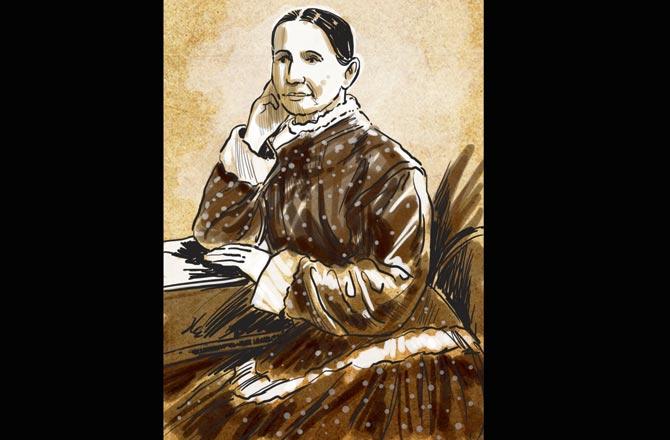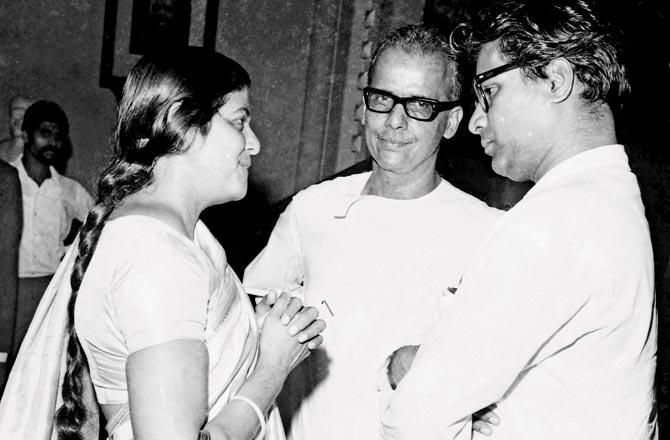How did Bombay's precincts get to have the evocative names they do? A selection from the new book inspired by this column

Prescott road: At 90, Jini Dinshaw is founder-trustee of the city's longest running ensemble, the Bombay Chamber Orchestra. She lives and teaches music on Prescott Road, named after Mary Prescott
 Agripada the "hamlet (pada) of the Agris", wedged between west Byculla and east Bombay Central, was where a trio of cultivators (Agris) camped: Bhat Agris or rice planters, Mitha Agris or salt manufacturers and Bhaji-pala Agris or vegetable farmers.
Agripada the "hamlet (pada) of the Agris", wedged between west Byculla and east Bombay Central, was where a trio of cultivators (Agris) camped: Bhat Agris or rice planters, Mitha Agris or salt manufacturers and Bhaji-pala Agris or vegetable farmers.
ADVERTISEMENT
Altamont Road it is, not Altamount Road as most misname it. Colonel Altamont served the Nawab of Lucknow before settling on this lush Cumballa Hill slope leading up from Kemp's Corner.
Apollo Bunder is traced partly from "bandar", meaning "port". Palla fish was sold on these shores. Corrupted to the Portuguese "Pollem", the word finally emerged as "Apollo". Another version has it that Apollo is an adaptation of palava, a fishing vessel—"Palava la jaavu ya" meant "Let's go fishing."

Who sailed solo to 19th-century Bombay to pioneer education for girls in the Esplanade area. Pic/Suresh Karkera
Bandra being prime monkey habitat, was called Vandra, or "ape". The general allusion is the Portuguese's, hailing Bandor, from "bandar" or "port". Variations abounded—Bandera, Bandura, Bandore, Bandorah, Bandara—till a railway signboard conclusively printed: Bandra.
Bhendi Bazar isn't only a nod to Indian tulip tree groves (Thespesia populnea), locally dubbed "bhendi". The Brits referred to the area as "behind the bazar", which people colloquially slurred to Bhendi Bazar.
Borivli gets its name from plantations of boras, fruit berries which used to fall in thick carpets on the ground of this northern suburb the English insisted on spelling as "Berewlee".
Breach Candy comes from "breach", a gap in the rocks the land mass formed here, linking its Arabian Sea flank to the Mahalaxmi and Byculla flats beyond. "Candy" could be the Anglicised pronunciation of "khind", meaning "a pass".
Byculla partially alludes to European carriages, called "gharries" (read purring Plymouths and stately Studebakers), rolling past Cassi fistula trees—the Indian laburnum, "bhaya". Suffixed with "khala", which was a threshing floor, the words combined as Byculla.
Carmichael Road, with residences Claude Batley and George Wittet imagined along the eastern edge of Cumballa Hill, acknowledges David Fremantle Carmichael of the Civil Services. It has been renamed ML Dahanukar Road, honouring the first post-Independence Sheriff whose family lived mid-street at Shree Sadan.
Chembur stems from the charming Marathi "chimboree" (big crab), like Kurla from "kurlya" (little crab). At low tide, its sun-hardened soil withstood the tread of bullock carts carrying Pathare Prabhu, Koli, Bhandari and Agri settlers.
Chowpatty combines "chau" or "four" and "patti", the channels that tides flowed into till the western foreshore was reclaimed. Interestingly, though the word signified four inlets from the sea to Girgaon, today this is an outlet for people to the sea.
Churchgate refers to St Thomas' Church (it became a cathedral in 1837), half a kilometre from the railway station, roughly where the Flora Fountain stands. Till the 19th century, Bombay was fortified with walls, a moat and three gates. The other two were Apollo Gate and Bazar Gate.
Dongri derives from "dongar", or rock, rising on a hill levelled by the City Improvement Trust. Dongri is supposed to have given its name to the dungaree, Indian calico used for workmen and labourers clothes before it became a fashion item.
Forjett Street takes after Charles Forjett, the Anglo-Indian Deputy Commissioner of Police (1856-64), who organised Bombay's first police force. Slipping into clever disguises to bust 19th-century crime rings, he donned the desi dress, spoke local lingo and artfully slunk along dark streets to feel the pulse of the people.
French Bridge is in fact fully English. The 1866-constructed Gamdevi bridge is named for Colonel Patrick T. French, British founder chairman of the BB&CI Railway. Indophile and musicologist, French submitted the Royal Irish Academy essays like "Catalogue of Indian Musical Instruments".
Ghatkopar some say, alludes to the suburban hill range tapering off at Thane, "ghat ke oopar". Others ascribe it to the Marathi word for corner—"khopra"—of the Western Ghats, therefore Ghat-khopra.

Goregaon: Goregaon activist Mrinal Gore, socialists Baburao Samant and George Fernandes at Baburao's daughter's wedding in the 1970s
Goregaon is not a hat tip to activist Mrinal Gore, dubbed "Paniwali Bai" (she campaigned for drinking water, among other crusades). Ghodegaon was the horse trade centre for Maratha warriors. They bought horses from Ghodegaon market, after trial trots 10 kilometres away on the rugged hilltop, which came to be called Ghodeghoom.
Gowalia Tank has a bucolic connotation. "Gow", meaning "cow", Gowalia referred to shepherds bathing their cattle and sheep in the boat-filled tank that once stood adjacent to Nana Chowk. A wilderness, the site was cultivated with rice and pomelo plantations before being built over.
Hughes Road touching Bombay's first flyover at Kemp's Corner, from 1964, salutes Sir Walter Hughes—inaugural chairman of the Improvement Trust, which developed this vicinity of New Gamdevi as a model "suburb" in 1908.
Kemp's Corner was birthed by everybody's favourite prescription chemist in a roofed store at this junction, Kemp & Co. The pharmacy dispensed medicines as well as soda water in a siphon bottle. Kemp's had an extremely accurate weighing scale available at no charge.
Khar from the Marathi "khara", or salty (the area was seawater marshy), unravels in a patchwork of Pathare Prabhu, Sindhi, Sikh, East Indian, Parsi, Gujarati and Muslim influences and confluences. When the suburb got its train station in 1924, premises on these "khara" tracts were declared ready to rent.
Khetwadi, lauded for sprawling paddy fields and groves (khet-wadi), now presents a barren spectre. Residents have slowly watched lanes lined with an abundance of peepul, mango and ashoka trees, flowering bushes, almond and drumstick trees, disappear.
Khodadad Circle at Dadar takes after travel writer Gustasp Irani's ancestor. The four buildings ringing this roundabout were erected by his grandfather Gustasp and his brother Rustom—"The municipal commissioner agreed to name the circle for their father Khodadad, my great-grandfather." Clockwise, as Tilak Bridge ends, stand Empress Mahal, Empire Mahal, Imperial Mahal and Harganga Mahal (formerly Rustom Mahal). Ishwar Singh Chowhan says the property was renamed Harganga in 1944, passed on to his uncle, Harnam Singh and father, Ganga Singh.
Matunga claims a dual etymology. The word Matang is Marathi for "elephant". This was where Raja Bhimdev's 14th-century elephant stables were. Another legend has it that sage Matang of the Ramayana rested here after wandering the subcontinent.

Mulund: Girija Chandramouli, a Mulund old-timer, at a flower show in the suburb Emperor Ashoka himself was among the first to step into. Pic/Datta Kumbhar
Mulund in Emperor Ashoka's reign, was where Buddhist monks rested, as they did near ports assigned names of gods and goddesses. This ancient precinct went from being called Mahabali to Muchalind to Mul-Kund. A 10th-century Tamrapatra copper plate from the Shilahara era is inscribed with the word "Mulund".
Pasta Lanes 1, 2, 3 and 4 in Colaba, sound like la bella Italia's delectable dish but really salute Kutchi Bhatia philanthropist Goculdas Liladhur Pasta. Sheth Mohanjee, Goculdas' cotton merchant forefather, was declared "pasta", or "prince", for his generosity. Honouring the legacy, Goculdas and his son Madhavdas sponsored temples, dharamshalas, wells
and tanks.
Prescott Road remembers Mary Prescott, who sailed to the subcontinent to start a school for girls. In 1860, the Englishwoman established JB Petit High School. Earlier called Miss Prescott's Fort Christian School, its current name owes thanks to Jehangir Bomanji Petit's later financial aid; it might otherwise have fused with the Cathedral Girls' School.
Santa Cruz translates as "Holy Cross" in Portuguese. The village known as Khulbhowree was hailed Santa Cruz by Salsette Christians reciting the Rosary together on a hillock, around a rough wooden cross. A chapel at the spot in 1850 marked the inception of Sacred Heart Church on SV Road in 1936.
Siri Road led from Gamdevi village up jungle-covered slopes of Malabar Hill to the Walkeshwar temple. Worshippers ascended the winding path which, being narrow, was named "Siri" (ladder) Road.
Sleater Road near Grant Road Station on BB&CI Railway land, commemorates JM Sleater, its Chief Engineer in the 1880s. It was renamed Naushir Bharucha Marg to honour the corporator-MLA credited for concretising the road, among the first tarred in South Bombay.
Tardeo, like other precincts taking after the flora that proliferated in and around them, was christened for palm tads flourishing below midtown Cumballa Hill. With a deity installed, the term Tad-dev was coined.
Vile Parle goes back to a pair of hamlets—Padle near Santa Cruz and Irle near Andheri—resulting in the station between named Vidlai (Idlai to those dropping the "V") Padlai. From Vidlai Padlai to Vile Parle was a step for East Indian Christian villagers whose paddy patches, fruit and rose gardens fanned out, zoned east-west.

Wadala: Kazim Ahmedji and Shakeb Ahmedji washing a stone at the Shaykh Misri Dargah believed to be 500 years old and indicative of the era in which this saint came to Wadala. Pic/Falguni Agrawal
Wadala has two stories suggesting its origin. Trees planted in 13th-century Bombay lent localities their names. Parel derived from the paral (trumpet flower), Wadala from wad (banyan). We prefer the colourful claim that a tiger roamed the area, eyes glowing and a fierce flick of his tail sweeping the ground he prowled down to from the hill. The Marathi "wagh dola", tiger eyes, became Wadala. This folksier version is offered by Kazim Ahmedji, from the Sunni family of mujawwar (caretakers whose ancestors worked in the service of saints) at Shaykh Misri Dargah.
Walkeshwar is literally "valu ke Ishwar", derived from the Sanskrit for a sand-sculpted deity. It is where Rama is believed to have rested a night, fatigued searching for kidnapped Sita. Picking a handful of sand from this spot, he moulded a lingam. Then, Walkeshwar gave its name to the main Banganga temple too.
Author-publisher Meher Marfatia writes fortnightly on everything that makes her love Mumbai and adore Bombay. Reach her at meher.marfatia@mid-day.com
Catch up on all the latest Crime, National, International and Hatke news here. Also download the new mid-day Android and iOS apps to get latest updates
 Subscribe today by clicking the link and stay updated with the latest news!" Click here!
Subscribe today by clicking the link and stay updated with the latest news!" Click here!






